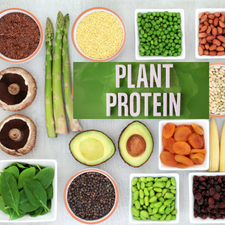Malt is the by-product of barley germination. Prior to being germinated in a controlled environment, the barley is washed and softened by steeping it in water. Drying, grinding, extracting, filtering, and evaporating the germinated grain results in malt extract, which contains 78 to 80 percent solids.
In India, health drinks are malt-based beverages that are fortified with nutrients and used to improve the flavor of milk. It has long been known that malt is a good dietary supplement for developing kids and adults. Malt is used as a nutritional supplement in low-protein diets because it includes more than 30 necessary minerals, elements, and vitamins, including folic acid, which is important for the mother and her fetus.
Malt all about
Malt has existed for hundreds, if not thousands, of years, however its exact origin is unknown. It may surprise you to learn that malt is still a common sweetener today. Grain is used to make it.
Is there a specific method for creating malt syrup? Soaking the grain seed promotes germination, the process by which it develops into a seedling. The seeds are heated to stop them from germinating and to remove any excess moisture as they sprout. The next step is to smash the components. In fact, moist and dried grains are crushed to create a syrup with a viscosity akin to molasses. It has a sweet, gooey, slightly nutty flavor, and there are countless possible uses for it.
Making syrup is not the only use for malt. Malt can be ground into a fine powder and mixed with milk to make malted milk powder. It has also gained global recognition due to its use in whiskey and beer. All malts are basically sprouted and kiln-dried cereal grains, regardless of the type.
The adaptability of malts
There are several different types of malts used in the food processing sector. They come in a range of forms, such as liquids, syrups, extracts, and dry items. Their color can vary from dark to bright, and they can be either enzymatic or non-enzymatic. Most consumers base their selection and use of malts mostly on flavor, color, enzyme systems, texture, and aesthetic appeal. Malts are popular because of their low GI and various health benefits. They contain easily digestible carbohydrates, proteins, vitamins, minerals, and trace amounts of sugar and enzymes. Malts are hand-picked for their unique flavor and great nutritional value.
Malt-based foods include a number of health drinks made from powdered gruel. This gruel is made with full milk, wheat flour, and malted barley. Powdered food, which is created by the evaporation process, is necessary to make a wholesome beverage. In addition to providing nutrients, it helps prevent a number of illnesses and ailments. The drink is made using just the best ingredients that meet all relevant municipal, state, federal, and international regulations. Because you can receive and send the drink to so many various regions, it has gained the respect of the clients worldwide.
Advantages for Your Health
Rich with vital nutrients
According to several studies, malted grains may be an excellent source of a number of essential elements. The nutritional value of pearl millet was considerably increased throughout the malting process, according to research published in the Journal of Food Science and Technology. Consequently, the total fat amount decreased while the protein and fiber level increased.
The information above indicates that barley malt flour has a wealth of advantageous components. Among the various minerals it contains are selenium, manganese, copper, iron, phosphorus, magnesium, zinc, and several B vitamins. It also has a respectable quantity of fiber and protein for a flour.
Promotes the health of the digestive system
Malt has a remarkable assortment of nutrients and has been demonstrated in numerous studies to be good for digestive health. Studies have shown that malt extract promotes the growth of probiotic cultures, which enhances the well-being of the gut lining and good bacteria.
This helpful bacterium is essential to almost every facet of health and disease. According to studies, the condition of one’s gut micro-biome affects a number of variables, such as immune function, nutrition absorption, cholesterol levels, and more.
Maintain appropriate cholesterol levels
Although preliminary data indicate that malt may help lower cholesterol levels, more research is required to determine the impact on humans.
For instance, rats given malted barley rather than wheat bran in a South Australian animal model showed reduced levels of the harmful cholesterols LDL and VLDL.
Other research have found that barley has chemicals that can lower body mass index, abdominal fat, waist circumference, and cholesterol levels. Further research is necessary to determine whether these results apply to malted barley.
Boosts morale
Many studies have been conducted on the mood-enhancing properties of hordenine, a component of barley. Malt is a wonderful food that improves mental and emotional well-being since it contains hordenine.
The journal Scientific Reports published a report in 2017 detailing further investigation into the characteristics of this naturally occurring chemical. The researchers believe that the euphoric effects of beer are caused by hormones, which may activate a specific dopamine receptor in the brain.
Increases the capacity for digestion
According to study, malting may improve the digestion of cereal grains by lowering their anti-nutrient content. Anti-nutrients are substances that can interfere with the digestion and absorption of certain nutrients.
A research in the Journal of Food Research found that combining fermentation and malting on sorghum and pearl millet greatly increased protein digestibility. The amounts of anti-nutrients such tannins and phytates, which can hinder the absorption of nutrients, were also decreased.
Last words
However, note that this does not mean that all of these meals are nutritious or that you should include any of them in your weekly meal plan. Malt is actually considered an additional sugar. This implies that excessive consumption may be detrimental and raise the risk of diabetes, heart disease, obesity, and other long-term illnesses. (In contrast, barley malt flour has very little sugar.)
Therefore, it’s best to choose healthy options and consume your favorite foods in moderation to get the most out of it. Malted barley cereals, for instance, are healthier than malted milkshakes or balls, which may include far more sugar and calories from other components.



